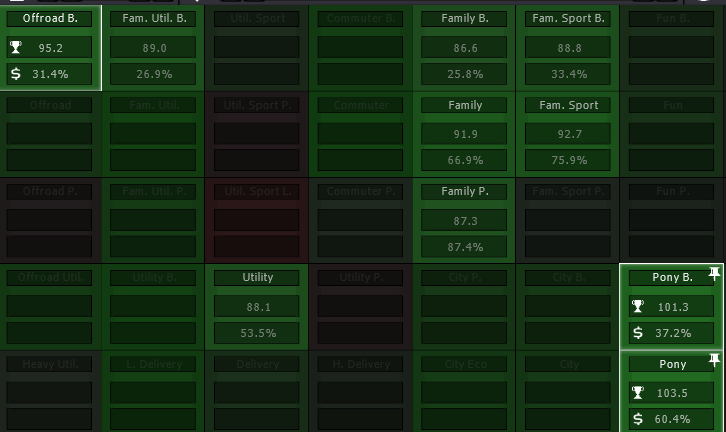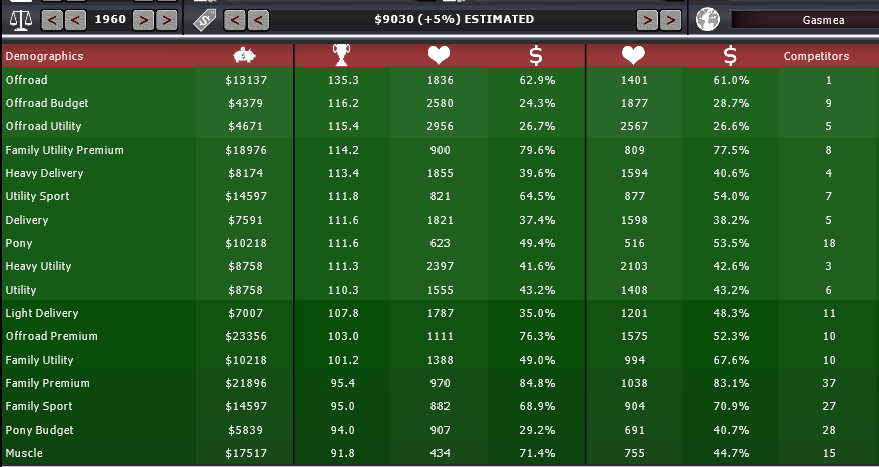@findRED19 I’m pretty sure it will do much better, I’m terrible at optimizing my cars. But, in the narrative of this car company, the engineers are most likely still hitting rocks together 
1960 Madero (second generation)
After the introduction of the Quijote and the Villa, the madero was upgraded to the sport model of ADM. After seeing what its fellow contry-company Meliora was doing, the guys running ADM decided that they wanted something of that as well, and the new generation of the Madero was presented.
It came in 2 trims, the regular or base and the
super which is the one in the picture.
The design was controversial, as it was completely different (and ugly) compared to the anterior design. Instead of the classic ladder chassis, or a modern monocoque, it was build on a spaceframe chassis instead (tooling for a monocoque car was expensive, especially for a car that was a gamble).
The base version was powered by the same SiCa22L as the Quijote, with a similar 4 speed manual transmission.
Inside, the car had 2 seats, an interior similar to the one in the Quijote Premium with power steering but no radio. Thanks to its light weight (930 kg) it managed to do 0-100km/h in 12.5s and to achieve a top speed of 162.6 km/h.
Market price: 8855
1960 price: $2,144.62
The super version was powered by a more powerful engine from the modular 4 family, the SiCa4B24 (2.4L OHV L4 with a 4 barrel carburetor)
With all the extra grunt from that engine (and with 20kg more) the car did 0-100 km/h in 10.5s and reached a top speed of 177.8 km/h.
Due to the fact that the ensamble of the car took longer than any other model in the line-up, very few were made every year, and it was a coveted model.
1960 price: $2,203.96








 It’s quite fun to do cars for the middle market, they don’t have to be over-the-top cars, and it allows to experiment different designs (as my main company Meliora Automotive is/or will be focused in premium and light sport cars, like BMW; while this company is more like Chevrolet-chrysler type of thing.
It’s quite fun to do cars for the middle market, they don’t have to be over-the-top cars, and it allows to experiment different designs (as my main company Meliora Automotive is/or will be focused in premium and light sport cars, like BMW; while this company is more like Chevrolet-chrysler type of thing.

















 !
!













